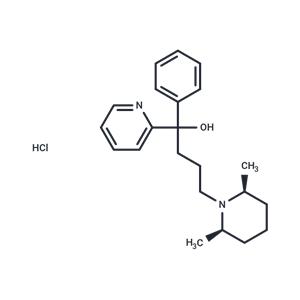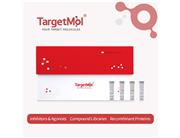| In vitro | Pirmenol concentration-dependently inhibits the carbachol-induced potassium current (I K.ACh) and requires higher concentrations to inhibit the GTPγS-induced current, with an IC 50 of 30 μM for the latter. Its inhibitory effects on I K.ACh are almost completely reversible, as the outward current returns upon Pirmenol washout. Moreover, Pirmenol acts on the muscarinic acetylcholine receptor-operated potassium current (I K.ACh) in atrial cells, effectively reversing the effects of carbachol on effective refractory periods and atrial fibrillation threshold in isolated guinea-pig hearts, showcasing its potential in experimental atrial fibrillation studies. |
| In vivo | Pirmenol hydrochloride, a novel pyridine-methanol derivative antiarrhythmic agent, displays significant variations in lethality between oral (po) and intravenous (iv) admissions in rodents, with a 10- to 15-fold higher tolerance for oral administration. Specifically, in rats, the lethal dose 50% (LD 50) rates are 359.9 mg/kg for oral and 23.6 mg/kg for intravenous routes, while in mice, these rates are 215.5 mg/kg and 20.8 mg/kg, respectively. Subacute toxicity studies over four weeks revealed minimal side effects in rats and dogs at intravenous doses up to 7.5 mg/kg and 10 mg/kg, respectively, with cardiac observations in dogs including increased heart rate, extended QRS duration, and shortened ST intervals, albeit without cardiac tissue damage, and only mild local reactions at the injection site. Orally administered Pirmenol is well tolerated over 13 weeks in rats at doses up to 100 mg/kg/day, and in dogs up to 15 mg/kg/day, with the latter showing anticholinergic effects at higher doses. Initial acceleration in heart rate and variable QRS changes were observed, without any drug-related tissue alterations. Teratology studies in rats and rabbits exhibited no adverse effects on organ development, except for embryotoxicity at 150 mg/kg in rats. |

 United States
United States




